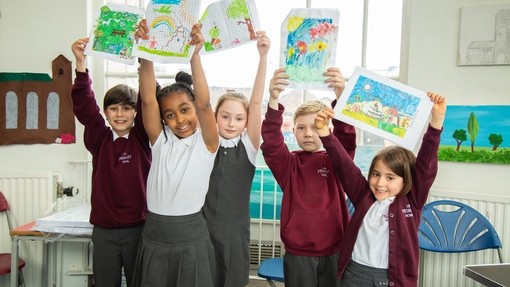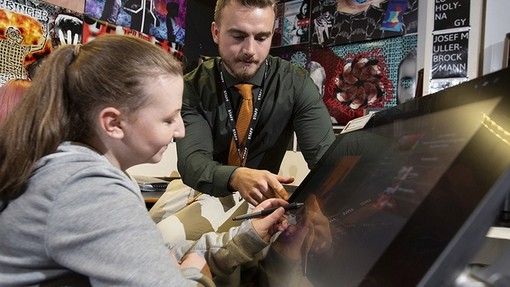
STEAM power: the benefits of integrating arts and science
Content
One director of STEAM explains how the introduction of a STEAM-based curriculum has built creative and connected learning experiences
You know it’s a good lesson when even the school governor doesn’t want to leave, and our Year 7, Harry Potter-themed STEAM (science, technology, engineering, the arts and maths) project was definitely delivering.
The students had been tasked with creating boxes and decorating them with designs inspired by Jim Kay (who illustrated the original book covers). As they concentrated hard on measuring and transforming 2D materials into the 3D boxes that would ultimately contain profiterole golden snitches that they would then bake and decorate in food science, the governor wanted to stay to watch them apply their interdisciplinary knowledge in a room brimming with excitement and engagement.
This was our first cross-curricular STEAM project, taking place across the whole of Year 7, and it was no small undertaking. The benefits of a solid grounding in STEM subjects for pupils are indisputable, but in 2015, when our school first adopted this new approach, we wanted to go further.
A STEAM curriculum interweaves different subjects, introducing learners to new ways of thinking and enabling them to apply their knowledge, understanding and skills through a holistic approach.
Adding a focus on creative skills to the sciences boosts engagement, encourages pupils’ problem-solving and encourages them to think about abstract concepts in real-world contexts. We also know that the arts encourage skills such as creativity, communication, independence, resilience, initiative and collaboration, and that these skills are fundamental for students to succeed in an increasingly complex, fast-paced and technologically advanced world.
Creative curriculum
As well as these more intangible benefits, the Harry Potter project yielded some measurable improvements, too. Our Hogwarts-style house cup encouraged pupils to take part in reading and other learning challenges to help their house triumph. It gave reluctant readers a reason to get involved, and we saw increased loans from the library during the project. A subsequent evaluation also showed an increase in attendance and decrease in behaviour referrals.
Full STEAM ahead
We have also introduced other initiatives, including Robots and Me, where students learn about Nasa and how humans are exploring space through technology, and the locally focused Our Maritime project. As part of this, Year 7 and 8 students explore local naval history, including the advances of – funnily enough – steam-powered technology.
We have forged links with the Royal Navy Fishery Protection Squadron to give students real-life naval experiences. They have visited HMS Tyne, learning about the work of engineering technicians, navigation and the various drills on board that require individual and collaborative skills such as problem-solving, critical thinking, communication, resilience and initiative. Best of all, we are connecting students with the history of their own community on the south coast.
Our Harry Potter project continues to evolve. In making Hogwarts-style clay gargoyles, students learn about genetics, variations and mutations of different species. They also learn about sedimentary rock to understand the chemical process that turns clay to ceramics through heat. And, of course, they express their creativity through the gargoyles themselves, such as the weird and wonderful beast one student made which had an eagle’s head, large goat ears and a snake’s tongue.
By constructing broomsticks in science lessons, too, students consider the properties of different materials and how they might affect flight, as well as bringing maths and science together by exploring the speed at which broomsticks might travel.
Local heroes
We joined forces with our Bridge organisation Artswork in 2016, working with them to create a network of STEAM teachers in Hampshire. We keep in contact through network meetings and give updates on the projects we are delivering and the outcomes they create, sharing good practice and pointers for the future. We inspire each other.
A joint professional learning day last year, for example, led one school to create its own Star Wars-themed STEAM day on 4 May (also known as Star Wars Day). Students had to think creatively by composing a song that explored what they had learned during their Star Wars STEAM sessions. This included examining the science behind different planets connected to Star Wars, learning about angles with lightsabres and considering the requirements of vehicles and creatures that might occupy outer space.
We are now part of a cultural network that uses the arts to engage, inspire and develop holistic, happy and courageous young people, who are confident in responding creatively to an ever-changing world. Affiliating with Artsmark has supported us in our ambitions to deliver a STEAM-based curriculum, and enriched our school’s arts provision by affirming our mission – to broaden the horizons and lift the aspirations of our students, staff and community.
Emma Cairns is director of STEAM at Bridgemary School in Gosport, Hampshire


